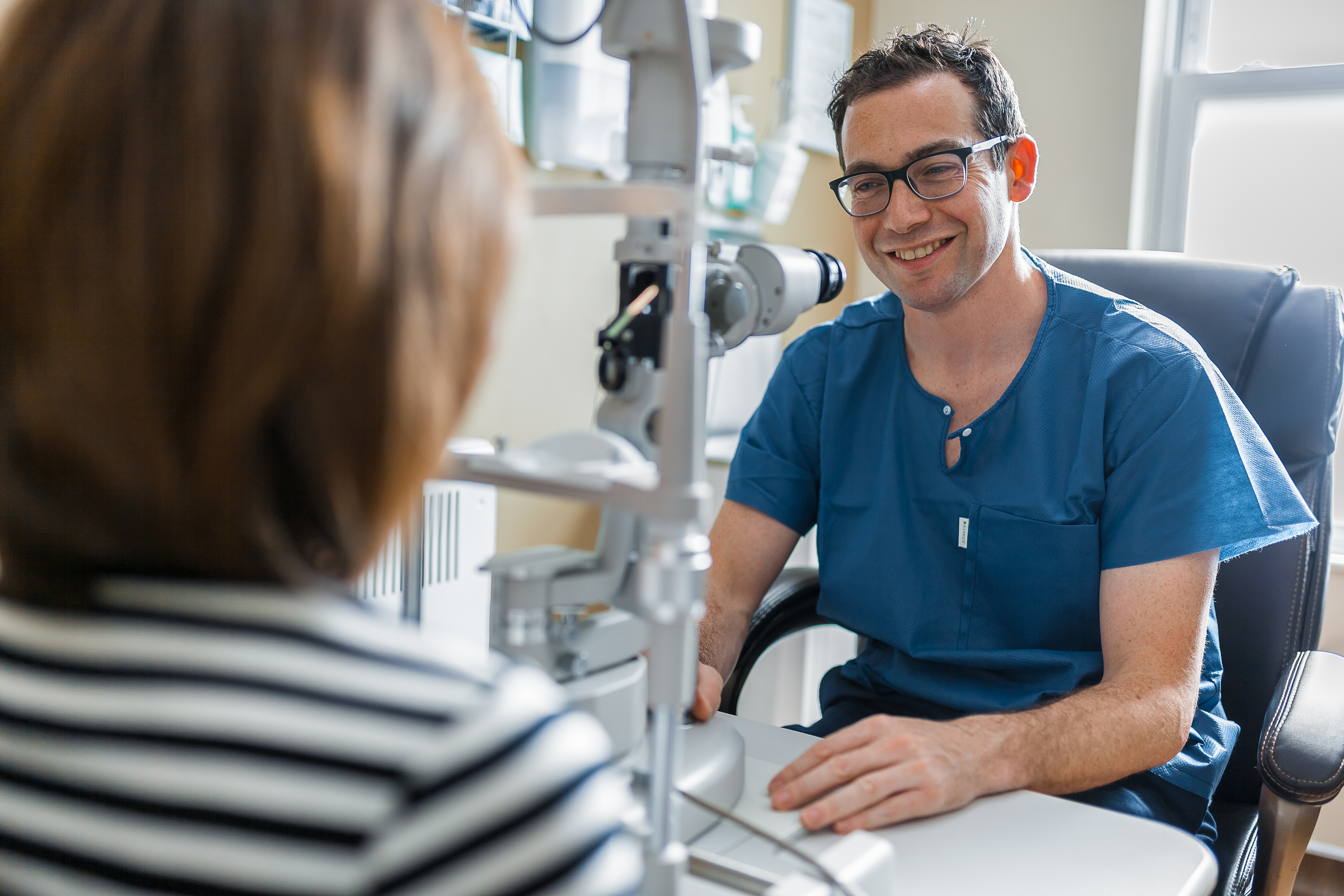Blepharoplasty is the medical name for the surgical removal of excess eyelid tissue. The excess tissue is most commonly skin (dermatochalasis – excessive upper eyelid skin), but often fat and muscle are additionally removed from the eyelid, depending on the needs and appearance of each specific patient.
Excess skin and/or protruding fat can be present in one or both upper or lower eyelids, but is most common in the upper lids. The excess skin can droop in front of the eye, blocking the upper vision and can be a cosmetic problem. It can also cause an uncomfortable heavy, tired sensation, particularly when reading or concentrating. Sometimes the skin can sit on the eyelashes causing discomfort, pushing the eyelashes into the area of vision or making it difficult to apply make-up. Finally, excess skin on the outer side of the upper eyelid sometimes tracks tears in the wrong direction (‘wicking’) causing a watery eye.
Excess skin most commonly occurs with aging, but sometimes occurs in younger age groups and can run in families. It is sometimes associated with ptosis (drooping of the upper eyelids).
Sometimes the eyebrow also descends with age and it may also be advisable to lift the eyebrow as well, which is often done with an internal hidden suture (internal brow pexy).
What will happen at my clinic appointment?
In clinic, Mr. Saul Rajak, who is an oculoplastic surgeon will examine your eyes, eye movements and eyelids. It can be helpful if you have old photographs (for example passport or driving licence). If ptosis is also detected, sometimes some further tests are occasionally required. Mr. Rajak will discuss the risks and benefits of surgery with you and the desired post-operative appearance as the surgery will be tailored to your eyelids. Then, Mr. Rajak will take photographs of your eyes as both a clinical record and to help plan the surgery.

How is excess eyelid skin treated?
The most common blepharoplasty operation involves carefully assessing and marking the excess skin and excising (cutting out) it. The incision for the surgery is almost always hidden in the skin in the existing eyelid crease (skin fold) and is invisible a few weeks after surgery. The skin incision is closed with sutures that are removed 1-2 weeks after the surgery.
Upper lid blepharoplasty surgery takes about 20-35 minutes per eye and is almost always a day case procedure. It is usually done with local anaesthetic (injections to numb the eyelid skin). However, occasionally, for example for patients with severe tremor or anxiety, sedation may be recommended, which makes one very sleepy during the anaesthetic injections and relaxed and a little sleepy during the operation. If both eyes require blepharoplasty surgery, it is usually best to operate on both sides at the same time to give the highest likelihood of a symmetrical result.
Lower Eyelid Blepharoplasty
The lower eyelids can develop excess skin and fatty tissue and lower eyelid blepharoplasty can dramatically rejuvenate the appearance. Lower eyelid blepharoplasty is more invasive operation that is generally done either local anaesthetic with sedation or under general anaesthetic (asleep).
